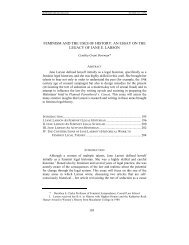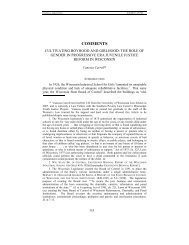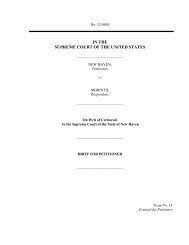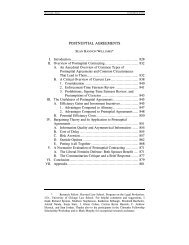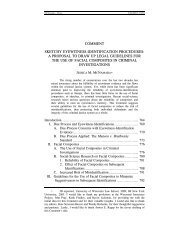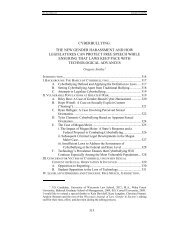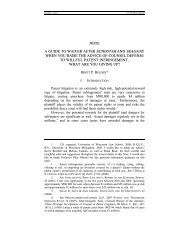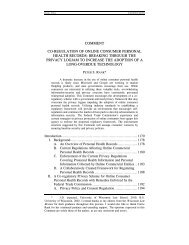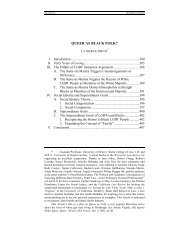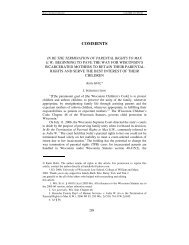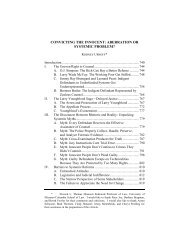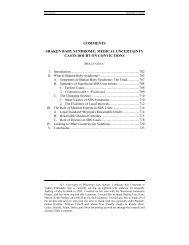Stealing Beauty: Pivot Point International v ... - UW Law School
Stealing Beauty: Pivot Point International v ... - UW Law School
Stealing Beauty: Pivot Point International v ... - UW Law School
Create successful ePaper yourself
Turn your PDF publications into a flip-book with our unique Google optimized e-Paper software.
2006:1067 <strong>Stealing</strong> <strong>Beauty</strong> 1077<br />
that a particular expression of features on a doll’s face was not subject to<br />
copyright protection. 69 In its holding, the Goldberger court claimed that<br />
for a work to be copyrighted, it only has to have been “independently<br />
created” by the author and possess “some minimal degree of<br />
creativity.” 70 The court claimed that there are “innumerable ways of<br />
making upturned noses, bow lips, and widely spaced eyes,” all of which<br />
could be protected because each would be a particularized expression of<br />
the same idea, not a copy of the idea itself. 71 The Seventh Circuit<br />
applied the Goldberger case to <strong>Pivot</strong> <strong>Point</strong>, stating that Mara was merely<br />
the artist’s particularized expression of the “hungry look” of runway<br />
models, and was therefore copyrightable. 72<br />
II. THE CLARIFICATION OF CONCEPTUAL SEPARABILITY<br />
Because of the Seventh Circuit’s decision in <strong>Pivot</strong> <strong>Point</strong>, it is<br />
significantly easier to determine whether an aesthetic element of a useful<br />
article is copyrightable or not. This section will describe the doctrine of<br />
conceptual separability in more depth and present several different<br />
proposed tests for conceptual separability, from both the Second Circuit<br />
and various legal thinkers. This section will then analyze the Seventh<br />
Circuit’s choice in combining the Brandir and Barnhart tests, and<br />
conclude that its synthesis of the tests adequately considers all of the<br />
rationales behind these competing tests while providing future courts<br />
with a workable test for determining whether conceptual separability<br />
exists.<br />
The doctrine of conceptual separability limits the copyrightability of<br />
useful items. 73 Generally, copyright protection is available to “original<br />
works of authorship fixed in any tangible medium of expression,”<br />
including “pictorial, graphic, and sculptural works.” 74 It is possible,<br />
however, for primarily useful articles to also have aesthetic elements that<br />
would otherwise place the entire item within this protected category. 75<br />
The doctrine of separability ensures that useful items 76 are only included<br />
69. Id. (discussing Goldberger, 365 F.3d 133).<br />
70. Id.<br />
71. Id.<br />
72. Id. at 931.<br />
73. See, e.g., id. at 931.<br />
74. 17 U.S.C. § 102(a) (2000).<br />
75. See <strong>Pivot</strong> <strong>Point</strong>, 372 F.3d at 931.<br />
76. “Useful article” is defined as “an article having an intrinsic utilitarian<br />
function that is not merely to portray the appearance of the article or to convey<br />
information.” 17 U.S.C. § 101 (2000). For a judicial interpretation of this definition, see<br />
Langman Fabrics v. Graff Californiawear, 160 F.3d 106, 114 (2d Cir. 1998) (stating that,




